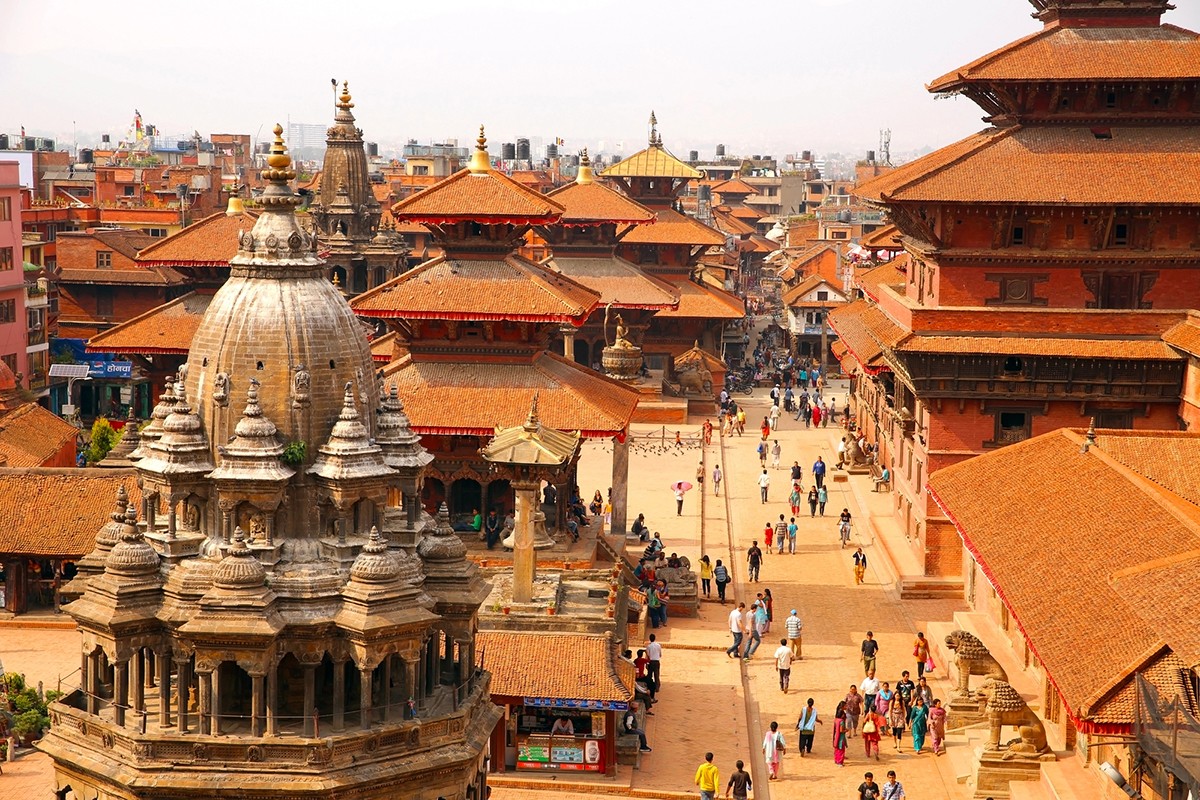If you’re planning a trip to Nepal, you might be wondering “is Kathmandu worth visiting”?
Kathmandu, the buzzing capital of Nepal, is an assault on the senses.
Horns penetrate the air day and night, you’ll constantly be weaving in and out of traffic, smelling curry from streetside restaurants and admiring brightly coloured prayer flags strung from every building.
Most tourists to Nepal visit Kathmandu, even if it’s only for a night or two between landing in the country and heading to the Himalayas.
But is Kathmandu worth visiting in its own right? Should you spend a couple of day there on a Nepal trip?
I actually ended up spending one week in Kathmandu after hiking to Everest Base Camp, which wasn’t my plan – I had a medical issue that meant I needed to stay in the capital in case I needed further care!
While this was longer than expected, it did help me suss out the capital and surmise the main reasons to visit Kathmandu.
So, let’s get into whether I think Kathmandu is worth spending some time in.
Is Kathmandu worth visiting?
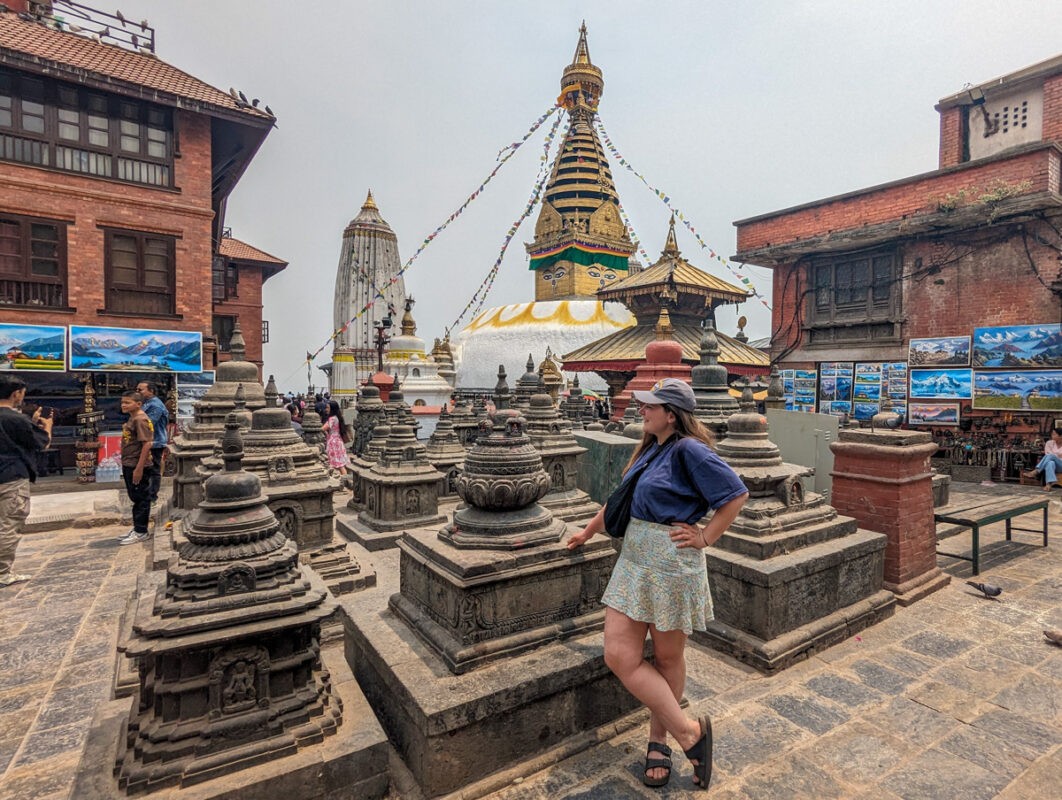
It may be overwhelming, but I do think that Kathmandu is worth visiting, if only for a couple of days.
But there are a few things to bear in mind when planning a trip here!
Reasons to visit Kathmandu
Here are the top reasons to visit Kathmandu!
1. Temples and culture

Among the best things to do in Kathmandu are its incredible temples, which reflect Nepali culture.
Nepal is a fusion of Hindu and Buddhist, with influences from India and China, but still very much its own.
Both are beautiful religions and walking around the stupas in Kathmandu I felt a sense of awe and calm. They’re perfect spaces to reflect before or after a trip trekking in the mountains.
My favourite temple (despite the monkeys!) was Swayambhunath. This has actually been dubbed “Monkey Temple” due to the number of monkeys there – but it is well worth a visit. I loved the huge stupa, was awed at the temples surrounding it, and enjoyed the panoramic – albeit smoggy – view of Kathmandu.
There are also plenty of temples in Durbar Square, which just means “Royal Square”.
2. Food

Nepali food is delicious, and it’s no surprise that some of the best restaurants in the country in Kathmandu.
My favourite restaurant in Kathmandu was Third Eye Restaurant – it’s a relatively upscale restaurant and we got a massive meal here, with a starter, main and smoothie, for just £14 each.
My favourite Nepali dish is momos – these are small dumplings that are filled with vegetables, paneer, chicken or buffalo (obviously, being vegetarian, I went for the first two options!).
And the best momos I had in all of Nepal were ones that I made at a cooking class – not because of my personal momo cooking skills, but because the ingredients were especially fresh and our teacher was fantastic!
The cooking class is Nepal Cooking School, and it’s run by a non-profit that helps women and children in the country and has been helping to rebuild after the 2015 earthquake.
So, by taking the class, you’re helping a good cause too.
You can also do a food tour around Kathmandu to try some local spots and taste dishes that you didn’t even know exist too!
3. Thamel has a buzz
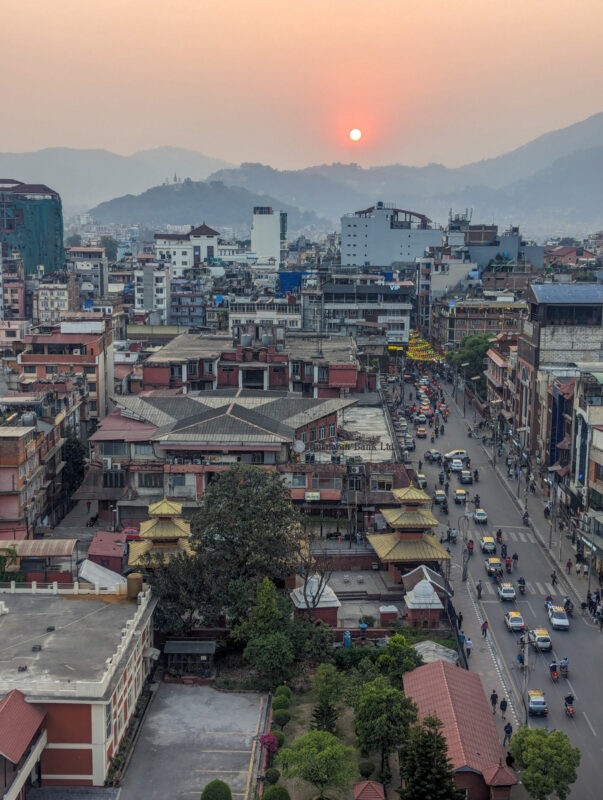
There’s something about Thamel that I couldn’t quite put my finger on.
It is very touristy – there’s no denying that – but it’s energetic, with trekking and souvenir stores at ground level and rooftop cafes and bars above.
After hiking in the Himalayas, it’s easy to spend a couple of days just hanging out in Thamel, enjoying beers or juices in rooftop bars and stocking up on your souvenirs! This is exactly what we did after our time hiking Everest Base Camp.
While there aren’t many attractions per se here, it’s a fun place to hang out for a while.
4. There are a few excellent day trips
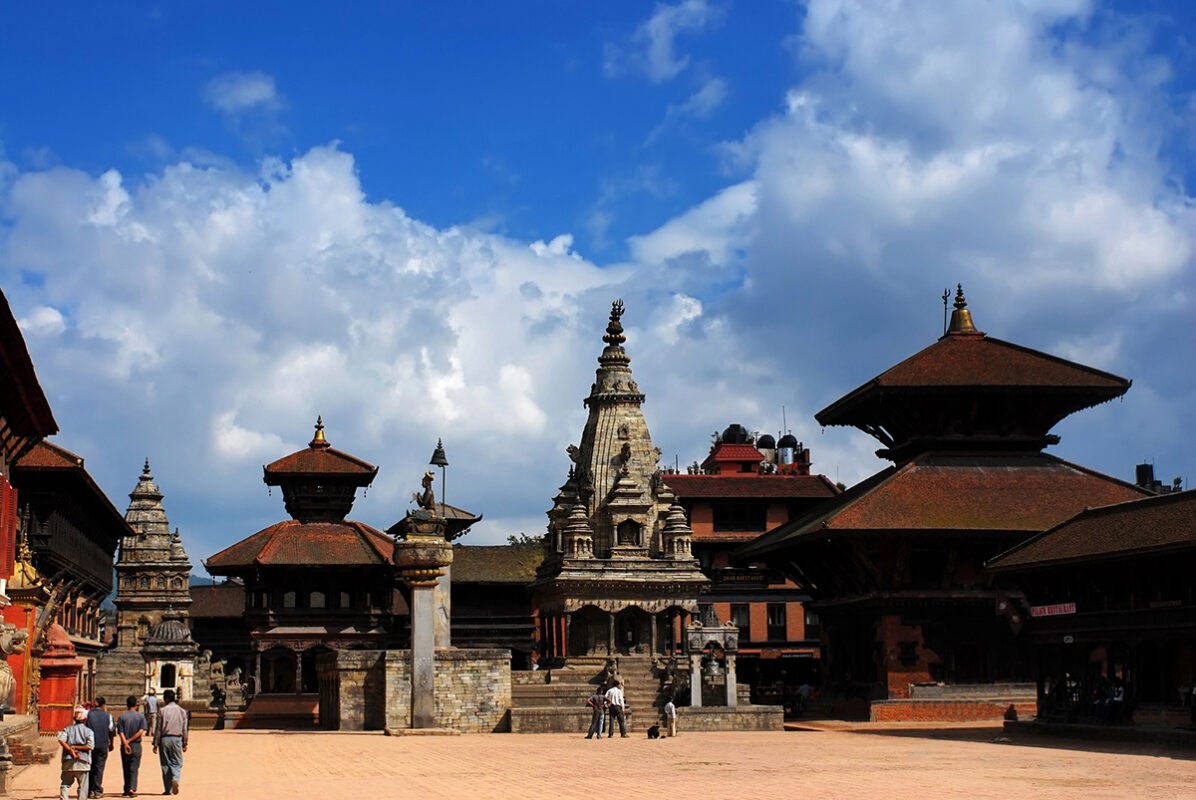
Kathmandu is a great base for cultural and nature day trips.
Bhaktapur is just a 45 minute drive away (in good traffic, which is rare in Kathmandu!) and is a glimpse into ancient Nepalese architecture and traditional Newari culture.
Wander through its narrow streets, and you’ll find intricately carved wooden windows and impressive temples. Don’t miss Taumadhi Square with its towering Nyatapola Temple.
Another must-visit is Patan which is known for its artistic heritage.
Patan Durbar Square is filled with ancient palaces, statues, and temples.
The Patan Museum, housed in a former royal palace, gives you deeper insights into Nepal’s history and art.
Here’s a day trip which includes visits to both Bhaktapur and Patan.
For nature lovers, a trip to Nagarkot is essential.
This hill station offers panoramic views of the Himalayas, especially at sunrise and sunset.
It’s a peaceful escape from the city’s hustle and perfect for a relaxing day in nature.
There are also plenty of hiking trails around Nagarkot.
Take a look at this overnight trip which includes watching sunrise over the Himalayas.
5. Excellent hotels

If you fancy a taste of luxury for a few days (without breaking the bank), Kathmandu definitely delivers.
I spent three nights in the five-star Hotel Barahi, which boasts a rooftop pool, bar with incredibly views of the city and spacious, comfortable rooms with HUGE beds that felt like a cloud!
Hospitality is incredible, and the entire hotel exudes a relaxing atmosphere.
I also spent my last night in Yak & Yeti Hotel, which is around a 15 minute walk from Thamel. This hotel felt more historic, with rooms decorated in a period style, yet with all the mod cons you need.
The grounds were spacious and gorgeous with a pool and tennis courts.
6. It’s quite safe
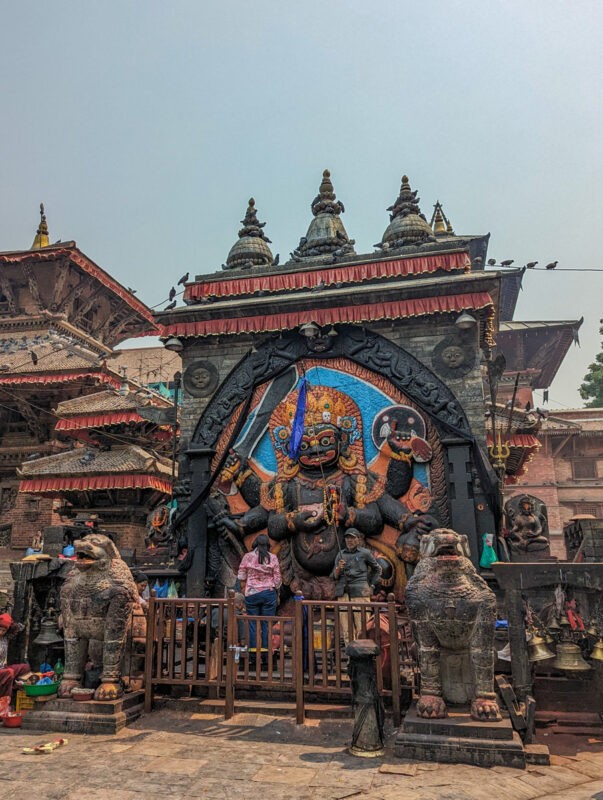
Kathmandu is generally a safe destination for travellers.
The city has quite a low crime rate, making it a more secure option compared to other capitals in the region.
Pickpocketing can happen, especially in crowded areas, but violent crime is rare.
For female travellers, Kathmandu is relatively safe (as is most of Nepal).
Many women travel solo here without issues, although it’s always wise to stay alert and take common precautions like avoiding walking around solo at night (Thamel is fine until the shops close).
The local community is friendly and helpful, and you’ll often find people willing to assist if you need directions or advice.
7. Affordability
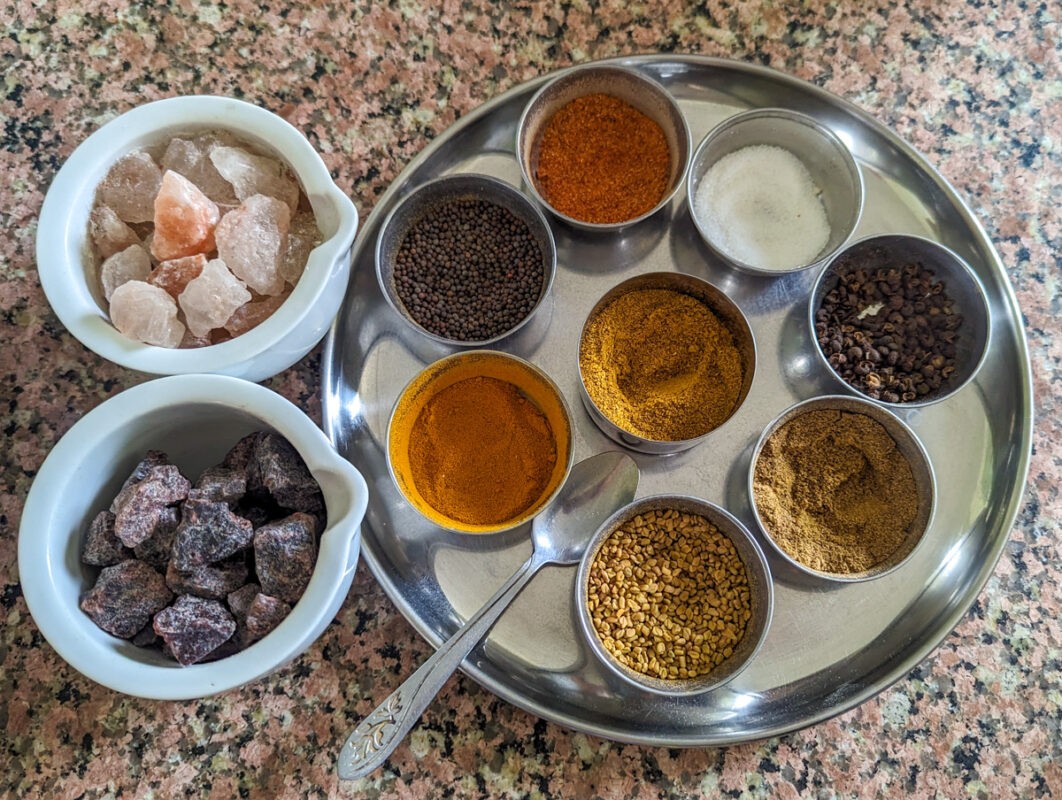
Kathmandu is a budget-friendly destination, so it’s perfect if you want to stretch your money that little bit more!
Accommodation ranges from inexpensive hostels to mid-range hotels, with many comfortable options that won’t break the bank.
You can find clean, basic rooms for $10 per night, while mid-range hotels offer more amenities at reasonable rates. And, if you want a slice of affordable luxury, check out Hotel Barahi or Yak and Yeti!
Eating out in Kathmandu is also affordable.
Street food stalls and local eateries serve delicious meals for just a couple of dollars.
Even dining at nicer restaurants won’t cost a fortune – so you can enjoy a variety of Nepali and South Asian cuisines without overspending.
Shopping for souvenirs and trekking gear is pretty budget-friendly as well. I spent around £50 on a down jacket, rucksack cover, sleeping bag liner and two tops in one of the many hiking stores here.
Thamel is filled with shops where you can find everything from handmade crafts to outdoor equipment.
8. It’s friendly to tourists

Kathmandu is incredibly welcoming to tourists.
You’ll find many English-speaking locals – especially in Thamel. This makes communication easy and navigating the city a breeze.
There’s a vast array of restaurants, including tourist-focused cafes offering both local and international cuisine and more local affairs.
Whether you’re craving Nepali momos or a burger, there’s something for every palate!
Accommodation options are plentiful, from budget hostels to luxury hotels. Whatever your preference, you’ll find a place that fits your needs. Thamel is packed with hotels, many of which offer booking services for various activities.
Booking activities is straightforward, with many options available through Get Your Guide or directly with hotels and local agents in Thamel.
Whether you’re planning a trek, a cultural tour or a cooking class, it’s easy to organise your itinerary as soon as you step into the city!
Considerations for visiting Kathmandu
Here are some things to bear in mind before spending time in Kathmandu!
It’s hectic

Kathmandu is a bustling city that never seems to sleep. The constant noise from traffic, street vendors and crowded sidewalks can be overwhelming to say the least!
Navigating through the chaotic streets requires patience and energy, as you’ll often find yourself weaving between vehicles and pedestrians.
The sheer volume of people and activity can be exhausting, especially if you’re not used to such a fast-paced environment. Finding moments of peace and quiet might be challenging, and the constant sensory stimulation can take its toll.
It’s a good idea to plan for some downtime in your itinerary. Taking breaks in quieter cafes or spending time in the serene courtyards of temples can help you recharge.
Staying in a hotel with a peaceful atmosphere, away from the busiest areas, can also provide much-needed respite. (I highly recommend Hotel Barahi – check it out here!).
Air pollution
Air pollution is a significant issue in Kathmandu – which you can really feel if you’re coming from the clean air of the Everest region!
The city often experiences high levels of smog, especially during the dry season. Dust from construction, vehicle emissions, and smoke from burning garbage contribute to poor air quality.
Breathing in the polluted air can be uncomfortable, and those with respiratory issues might find it particularly challenging. It’s a good idea to carry a mask, especially when walking around busy streets or travelling in open vehicles.
Indoor air quality can also be a concern, so consider staying in accommodations that offer air purifiers or have good ventilation.
Limited infrastructure
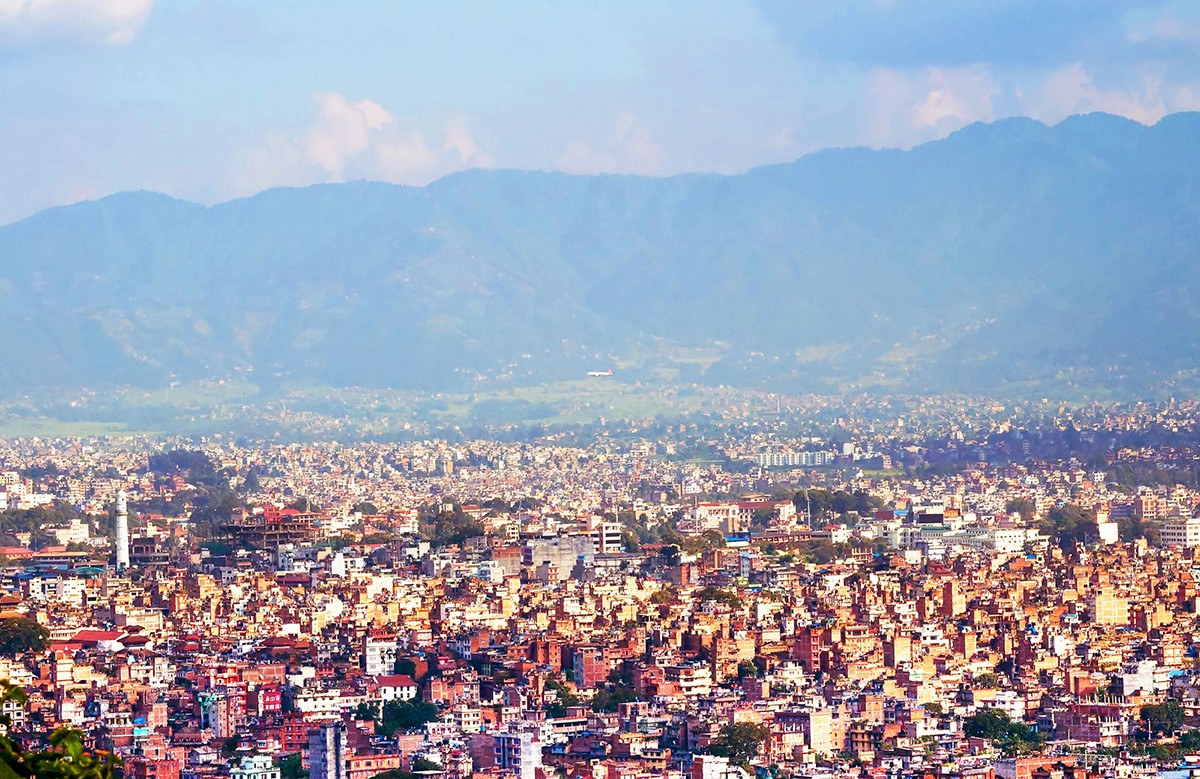
Kathmandu’s infrastructure can be challenging for visitors.
Roads are often narrow, crowded and in poor condition, making transport less efficient. Traffic jams are common and navigating through the city can be slow and frustrating.
Public transport is available but can be unreliable and crowded. Buses and microbuses are often packed, and schedules are inconsistent. Taxis and rickshaws are more convenient but might require negotiation on fares.
The city’s water and electricity supplies can also be inconsistent. Power outages, known locally as “load-shedding,” still occur occasionally, though they are less frequent than in the past.
Tap water is not safe to drink, so always opt for bottled or purified water.
Internet connectivity varies, with some areas offering fast and reliable service while others do not. Many hotels and cafes in tourist areas like Thamel provide free Wi-Fi, but the speed and reliability can differ significantly.
Noise pollution
Noise pollution is a constant presence in Kathmandu.
The city’s streets are filled with the sounds of honking horns, bustling markets, and chattering crowds from early morning until late at night. Traffic noise is particularly intense, with cars, motorcycles, and rickshaws contributing to the continuous din.
Construction work and street vendors with loudspeakers add to the cacophony. On the day after I arrived back from my Everest Base Camp trek – when I could really have done with a lie in – I was woken up at 5:00 am by the sound of clanging outside – building works were beginning for the day! This was at the Kailash Kutee Hotel in central Thamel.
If you’re staying near a busy road or in the heart of Thamel, the noise can be particularly intrusive.
To cope with the noise, consider bringing earplugs or noise-cancelling headphones and choose accommodations that are set back from main roads or in quieter areas.
Another plug for Hotel Barahi – it’s just outside of Thamel, and the rooms are all elevated and insulated which means they stayed very quiet!
Risk of food poisoning

The risk of food poisoning in Kathmandu is something to be mindful of.
Here are some tips to avoid and deal with it:
- Street food and local eateries, while delicious and authentic, can sometimes lead to stomach issues for travellers unaccustomed to the local hygiene standards.
- Water contamination is a concern, so always drink bottled or purified water and avoid ice in your drinks unless you’re 100% sure it’s made from filtered water.
- When choosing where to eat, look for busy places with a high turnover of food, as this often indicates fresher ingredients.
- Sticking to cooked foods rather than raw items like salads can also reduce your risk.
- Many travellers recommend dining at reputable restaurants and cafes, particularly those in tourist areas like Thamel, which often have higher hygiene standards.
- It’s also wise to carry some basic medication for stomach issues, just in case – if you don’t have any from your home country, you can easily purchase this in one of the pharmacies in Thamel.
However, it can’t necessarily be avoided – I stuck to all of these “rules” and still fell ill on the last day of our Nepal trip, and had a bad stomach for two weeks after!
So, is Kathmandu worth visiting?
Yes, I would say Kathmandu is worth visiting, provided you are equipped to deal with its hecticness!
I’d also seriously recommend favouring staying in a nicer hotel if you can afford it – it’s wonderful to have a little oasis away from the hustle of the city.
I’ve been sharing my journey to Everest Base Camp and Nepal on TikTok and Instagram, and will soon be uploading videos to YouTube, so do follow along!

